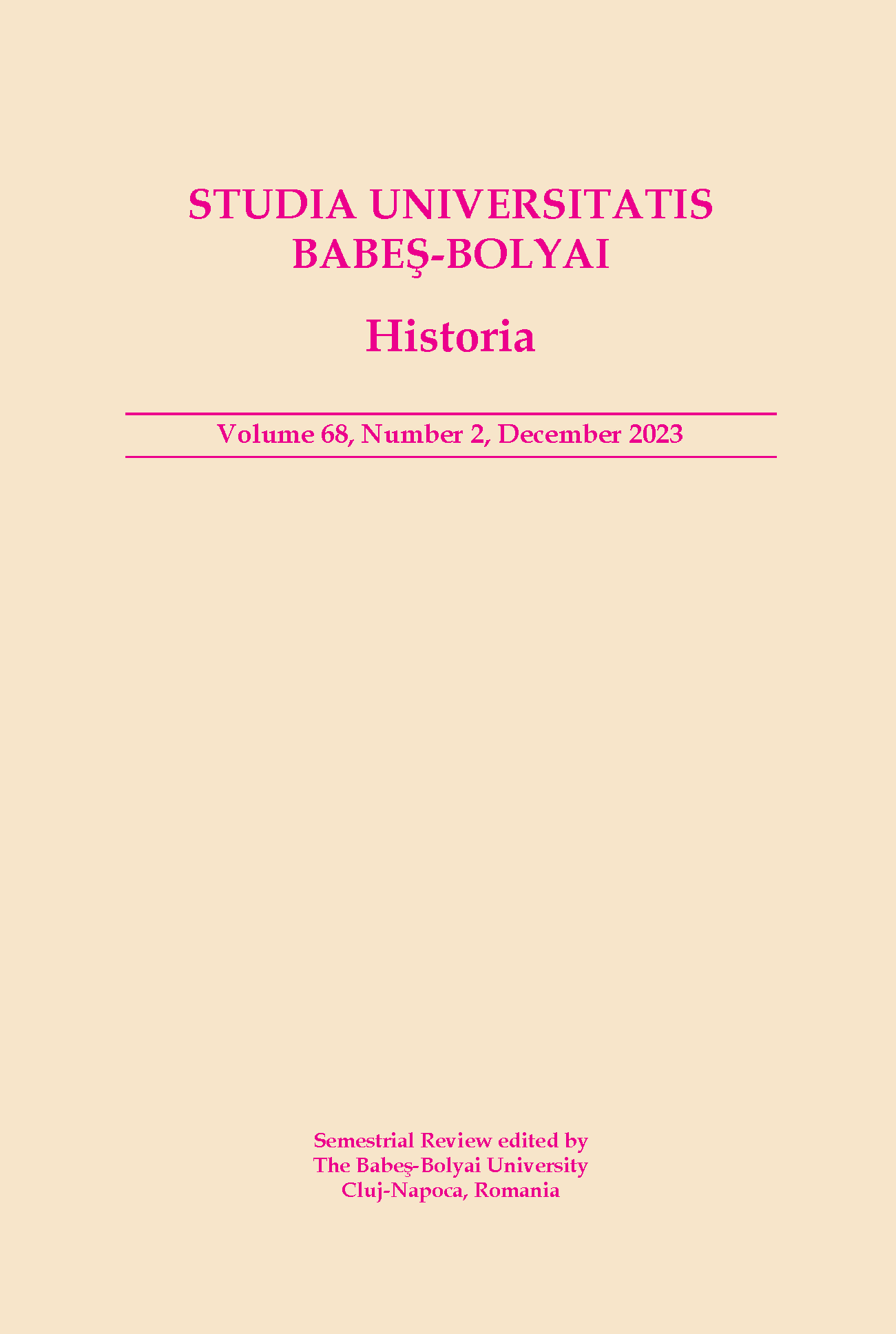The Institution of the Prefecture in Romania (1864–1892): Between social relations of patronage and political networks
DOI:
https://doi.org/10.24193/subbhist.2023.2.04Keywords:
Institutional history, administrative reform, ispravnik, prefectAbstract
Historical research on the institution of the prefecture in Romania (United Principalities) in the 19th century, as a fundamental institution of modern state administration, involves several levels of analysis, combining institutional, political and social history. Our paper will focus on several aspects, in relation to a number of historical features specific to the Romanian case. These features stem from the implementation of a Western-origin institutional model in Romania, after the union of the Principalities of Moldavia and Wallachia, until the end of the 19th century. During this period, a maturation of the modern administration can be observed, both legislatively and functionally. In addition to the legislative framework of this period (the communal law of April 1864, amended in March 1872 and March 1883, the law on county councils of April 1864 and the law on the organization of administrative authorities of November 1892), other factors are also noteworthy, which made the prefect in Romania not only a government agent at the local level, but also a county administrator: the patronage relations of the Romanian elite – a legacy of the Old Regime, and the gradual consolidation of the power networks of the governing political parties, both of which had a relevant impact on the selection process of local officials and the conduct of parliamentary elections.
Rezumat: Cercetarea istorică a instituţiei prefecturii în România (Principatele Unite) în secolul al XIX-lea, ca instituţie fundamentală a administraţiei de stat moderne, implică mai multe niveluri de analiză, combinând istoria instituţională cu istoria politică şi socială. Ne vom concentra asupra câtorva aspecte, în legătură cu unele trăsături istorice specifice cazului românesc, rezultate din aplicarea unui model instituţional de origine occidentală în România, după unirea Principatelor Moldovei şi Valahiei, până la sfârşitul secolului al XIX-lea, când se poate observa o maturizare a administraţiei moderne, atât din punct de vedere legislativ, cât şi funcţional. Pe lângă cadrul legislativ al acestei perioade (legea comunală din aprilie 1864, modificată în martie 1872 şi martie 1883, legea consiliilor judeţene din aprilie 1864 şi legea de organizare a autorităţilor administrative din noiembrie 1892), se remarcă şi alţi factori care au făcut ca prefectul să fie în România nu doar un agent guvernamental la nivel local, ci şi un administrator al judeţului: relaţiile de patronaj proprii elitei româneşti, moştenire a Vechiului Regim şi consolidarea treptată a reţelelor de putere ale partidelor politice guvernamentale, ambele având un impact relevant în procesul de selecţie al funcţionarilor de la nivel local şi în desfăşurarea alegerilor parlamentare. Cuvinte-cheie: istorie instituţională, reformă, ispravnic, prefect
Article: history; Received: 31.10.2023; Revised: 08.11.2023 Accepted: 18.12.2023; Available online: 30.01.2024
Downloads
Published
How to Cite
Issue
Section
License
Copyright (c) 2024 Studia Universitatis Babeș-Bolyai Historia

This work is licensed under a Creative Commons Attribution-NonCommercial-NoDerivatives 4.0 International License.






